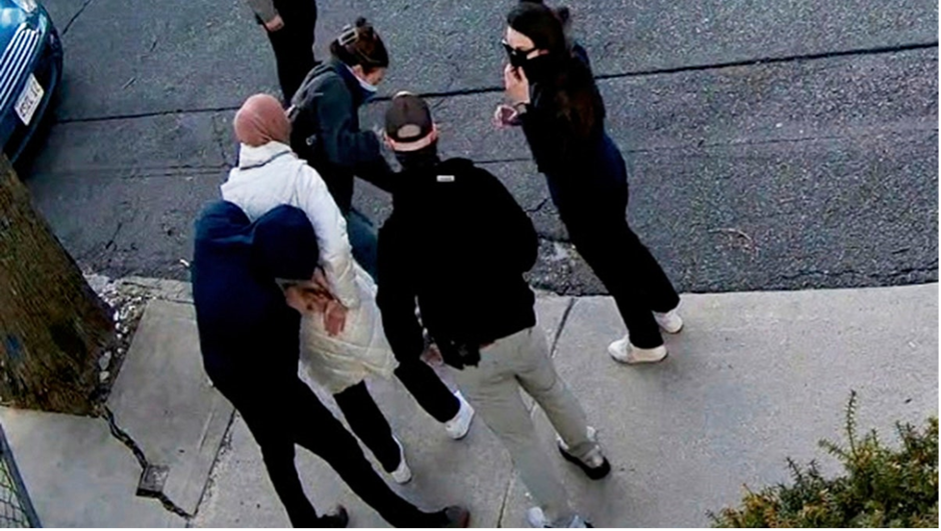Other than the Lone Ranger and Zorro and “superheroes,” the ‘good guys’ never wear masks. Then why are ICE agents masked and is it right to be disturbed by that choice?
Masking of police officers is not an American tradition. Far from it – police wear badges with numbers and name tags, and travel in marked cars. We even disclose names of police charged with misconduct despite fears about whether they will have protests near their homes.
And masks have been banned in state after state, going back to at least 1845, when New York prohibited them because they permitted insurrectionists to go unpunished, and later in response to the Ku Klux Klan.
How were masks used beyond hiding identity? As one court explained, by 1867 “masked Klan members had assumed the practice of ‘night riding,’ making nocturnal visits to the dwellings of blacks in order to harass and intimidate.” Church of the Am. Knights of the KKK v. Kerik, 356 F.3d 197, 200 (2nd Cir. 2004).
Beyond masks going against tradition, they intimidate not only because of their linkage to our own history and the Klan but – for immigrants from across the globe – the memories of the unaccountable military and secret police from whose persecution they often fled.
Where do police agents wear masks? Nations including Mexico and France allow masked law enforcement selectively – usually when going against organized crime or engaging in counter-terrorism operations. In authoritarian countries like Venezuela, Iran, and Nicaragua, however, their use is routine. ICE’s use of masks is far more closely aligned with these regimes than with the limited use in democracies like Mexico and France.
In a nation where law enforcement accountability is core to democratic governance, there is no excuse for ICE (or other agents) to routinely cover their faces. How is ICE masking justified? Government officials say the following:
- “Targeted attacks on ICE agents are up 413%.”
- “It’s for the safety of those individuals or the work that they’re doing as far as protecting their identity so they can continue to do investigative work.”
- “I’m sorry if people are offended by them wearing masks, but I’m not going to let my officers and agents go out there and put their lives on the line, their family on the line, because people don’t like what immigration enforcement is.”
- “When our heroic law enforcement officers conduct operations, they clearly identify themselves as police while wearing masks to protect themselves from being targeted by known and suspected terrorist sympathizers.”
These answers simply don’t hold up. Most ICE agents are not doing investigative work like going undercover. All law enforcement agents “put their lives on the line,” but they don’t mask. As to “known and suspected terrorist sympathizers,” there is no proof that the threat exists and no reason to limit it to ICE agents, because if true the same applies to FBI, DEA and other federal law enforcement personnel. And other law enforcement agencies have protected privacy when there are safety concerns while allowing officers to be identified – they have badge numbers but no name tags.
Most problematic is the 413% figure. DHS offers no explanation of where this number came from, what period of time it covers, or what the real numbers are. No law enforcement agent should be attacked, but if there was one attack one year and there were five the next year, that would be a 400% increase. The 413 number sounds bad but without more information is no justification for nationwide masking.
(This author made two requests to DHS for the source of this number, the time period it covered, and the actual number of incidents involved. As of June 23, 2025, no response was offered. And a Washington Post report noted that some assaults were at ICE facilities, and others were during arrests where the mask was already on. The Post article added that “ICE didn’t provide…any examples of immigration officers being identified, targeted and assaulted outside of the context of an arrest.” Philip Bump, Parsing ICE’s Mixed-Up, Hard-To-Believe Assault Claims, Washington Post, June 19, 2025.)
It is more than bad explanations that say “no more” to masks – beyond them are two concerns for a free society. When law enforcement agents are targeting individuals regardless of whether they are peaceful, hard-working and caring for infants and the elderly, isn’t it fair that people know who they are and can challenge what they are doing? And is the image at the top of this post what America should look like – masked men taking a student off the street, pushing her into a car, and speeding away?
Masked ICE agents are a dangerous echo of one of America’s darkest chapters and align us more with the authoritarian regimes we claim to oppose than democratic governments grounded in transparency and accountability. They create fear and invite violence. Our government has offered no reasonable explanations for the use of masks by ICE, and the explanations they have offered don’t hold up. Established law enforcement agencies in America, while far from perfect, have figured out how to protect their agents and accomplish their goals without hiding behind masks. If ICE is to be seen as a legitimate and lawful agency, it must do the same.


